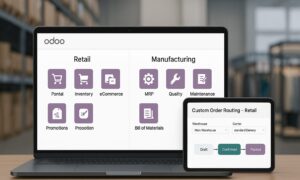After the widespread disruption that the entire retail sector experienced in 2020 and the positive news from a range of vaccines that are now emerging, retailers must start looking to the “new reality” that will follow.
With the third wave of the pandemic, uncertainty has become constant around the world, however, the only certainty is that many aspects of retail will not go back to the way they were before Covid-19.
It will require retailers to review the trends influencing the future, their long-term ambitions, and their current capabilities to chart the way forward. Here’s a quick starting guide for novice business owners and four trends that could shape retail in the future.
Retail and its trends
Customer demands and channel usage have evolved in recent years, resulting in increased complexity in offering products and services with limited capabilities and capital.
- Business Model and Partnerships: It is likely that in the future there will be more companies selling their platform capabilities to other retailers, through Platform as a Service (PaaS) business models. The benefit of PaaS is the ability for retailers to rapidly adopt platform solutions and evolve and scale with limited capital investment. However, this leaves retailers dependent on third parties, which can lead to expensive fees.
- Power in the Hands of the Client: Clients are in charge. Even with lockdowns, travel restrictions and economic uncertainty, it is clear that consumers retain power in the retail relationship. In fact, as consumers flock to online channels and platforms continue to capture market share, consumer choice is expanding exponentially, making it increasingly difficult for retailers to retain their customers.
- Decreasing Margins and Productivity: Increased costs to manage the new e-commerce offering, increasing pressure from suppliers to transfer raw material costs, rising labour costs, security measures related to the pandemic, and the need for new investments in capabilities Digital markets have rapidly eroded retail margins, going from ebitda margins of 7.5% in June 2011 to 4.7% in September 2019, according to UBS estimates.
- Purpose and Reputation: Customers want companies to represent something bigger than the products they sell. The purpose is different from the “vision” or “mission” and explains the reason, the “why” a company exists: it is the positive impact that a brand has on the lives of people, the society of which they are part and the environment in which they live.
More reach and new sales concepts
Retailers are now broadening their digital portfolios. Through various social media channels, you increase your virtual visibility and thus reach potential new customers. In addition, digitization enables retailers to create click-and-collect concepts that enable them to sell their goods from the store even if the lockdown prohibits normal shopping. Such prospects and benefits are accelerating the merging of online and offline sales. Especially since customers have already developed a tendency away from the city centers and towards online shopping in recent years.
Choosing an ePos
In the Covid-19 pandemic, as the world becomes faster and faster in a booming technological age, so must the way we do business. Electronic point of sale systems are fast becoming the technology of choice, and here’s why.
No matter what type of retailer you are, adopting an ePOS system can turn your business around by providing a one-size-fits-all solution to many everyday problems. Inventory mismatch, unrecorded sales, human error, and wasted time to correct are fairly common problems that retailers face every day. With an electronic point of sale system that accurately collects and records data, you can easily avoid all of these conflicts or setbacks, allowing you to truly understand how your business works and how to continually improve it. When it comes to inventory, organization and consistency are key.
Not only related to the delivery, but also to each sale, damage, and replacement of gifts. Imagine a system that automatically records all this content in real-time and stores it in a database through a remotely accessible network. In addition, you can organize the data for detailed analysis, so that you can see precisely which are the most popular products, the method, and the time of sale. The same goes for discounts and special offers.
Unlike traditional manual cash registers, the electronic point of sale system automatically calculates and tracks price changes when updating inventory. However, don’t just choose any ePOS system. Be sure to check out the list of ePOS systems available on the market and choose the one that meets your specific requirement.
The importance of retailers
The retailers must decide which business models will prepare for the future success. In that context, they can choose to buy, build or partner. If they decide to build, planning to transition from their “as is” state to the “future” state of tomorrow will require careful consideration.
Retail margins are under pressure as conventional forms of cost reduction are no longer enough to rebuild businesses. There are four key levers to reducing the cost of doing business:
- Strategic Product Assortment Selection to Drive Efficiency and Increase Profits
- Reconsideration of physical establishments
- Using technology to automate tasks while keeping customer service in the foreground



































